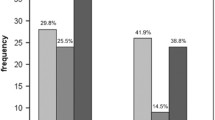Abstract
Introduction
Osteoporosis is a disease characterized by low bone mass and fracture of the bones irrespective of the aetiology. Insufficient data is available on the management of osteoporosis specific to individuals with spinal cord injury (SCI).
Case Report
The case describes a 24-year-old gentleman with a chronic spinal cord injury of 3-year duration, who was poorly evaluated and underwent unsupervised trial of therapeutic standing, resulting in a symmetrical supracondylar femoral fragility fracture. The assessment and management of the fractures and subsequent hemarthroses are also described in detail.
Discussion
Research shows mechanical loading of long bones in the lower extremity has the potential to reverse the osteoporotic process in SCI. However, ungraded and unsafe loading of joints following prolonged immobilization in individuals with chronic SCI, however may increase the risk of lower extremity fractures if appropriate measures for osteoporosis screening and treatment are not done.
Conclusion
This case report attempts to shine light on the need for proper evaluation to rule out osteoporosis prior to weight bearing or strenuous activity in this patient population, as well as the urgent need for timely mobilization and rehabilitation. Further research on weight bearing following chronic spinal cord injury is required to ascertain precise guidelines on timely loading of joints and prevent complications such as osteoporosis and fragility fractures.

Similar content being viewed by others
Explore related subjects
Discover the latest articles and news from researchers in related subjects, suggested using machine learning.References
Bryson M, Julia E, Gourlay M, Margaret L (2009) Bisphosphonate use in acute and chronic spinal cord injury: a systematic review. J Spinal Cord Med 32(3):215–25
Weaver FM, Etingen B, Guihan M, Ray C, Priebe M, Burns S et al (2020) Spinal cord injury providers’ perspectives on managing sublesional osteoporosis. J Spinal Cord Med 43(4):428–434
Abdelrahman S, Ireland A, Winter EM, Purcell M, Coupaud S (2021) Osteoporosis after spinal cord injury: aetiology, effects and therapeutic approaches. J Musculoskelet Neuronal Interact 21(1):26–50
Osteoporosis after spinal cord injury: aetiology, effects and therapeutic approaches - PubMed [Internet]. [cited 2024 Dec 10]. Available from: https://pubmed.ncbi.nlm.nih.gov/33657753/
Craven BC, Cirnigliaro CM, Carbone LD, Tsang P, Morse LR (2023) The pathophysiology identification and management of fracture risk sublesional osteoporosis and fracture among adults with spinal cord injury. J Pers Med 13(6):966
Rinonapoli G, Ruggiero C, Meccariello L, Bisaccia M, Ceccarini P, Caraffa A (2021) Osteoporosis in men: a review of an underestimated bone condition. Int J Mol Sci 22(4):2105
Moriwaki K, Mouri M, Hagino H (2017) Cost-effectiveness analysis of once-yearly injection of zoledronic acid for the treatment of osteoporosis in Japan. Osteoporos Int 28(6):1939–1950
Gifre L, Vidal J, Carrasco J, Portell E, Puig J, Monegal A et al (2014) Incidence of skeletal fractures after traumatic spinal cord injury: a 10-year follow-up study. Clin Rehabil 28(4):361–369
Sadowsky CL, Mingioni N, Zinski J (2020) A primary care provider’s guide to bone health in spinal cord-related paralysis. Top Spinal Cord Inj Rehabil 26(2):128–133
Watts NB (2011) The Fracture Risk Assessment Tool (FRAX®): applications in clinical practice. J Womens Health 20(4):525–531
Crack LE, Haider IT, Simonian N, Barroso J, Gabel L, Schnitzer TJ et al (2023) Zoledronic acid after spinal cord injury mitigates losses in proximal femoral strength independent of ambulation ability. Osteoporos Int 34(9):1637–1645
Wang C (2017) Efficacy and safety of zoledronic acid for treatment of postmenopausal osteoporosis: a meta-analysis of randomized controlled trials. Am J Ther 24(5):e544
Author information
Authors and Affiliations
Corresponding author
Ethics declarations
Conflicts of interest
None.
Additional information
Publisher's Note
Springer Nature remains neutral with regard to jurisdictional claims in published maps and institutional affiliations.
Rights and permissions
Springer Nature or its licensor (e.g. a society or other partner) holds exclusive rights to this article under a publishing agreement with the author(s) or other rightsholder(s); author self-archiving of the accepted manuscript version of this article is solely governed by the terms of such publishing agreement and applicable law.
About this article
Cite this article
Pillai, I.N., Paulson, M. & Chandini, N.C. Rare presentation of bilateral supracondylar femoral fractures in an individual with chronic spinal cord injury. Arch Osteoporos 20, 54 (2025). https://doi.org/10.1007/s11657-025-01540-5
Received:
Accepted:
Published:
DOI: https://doi.org/10.1007/s11657-025-01540-5




